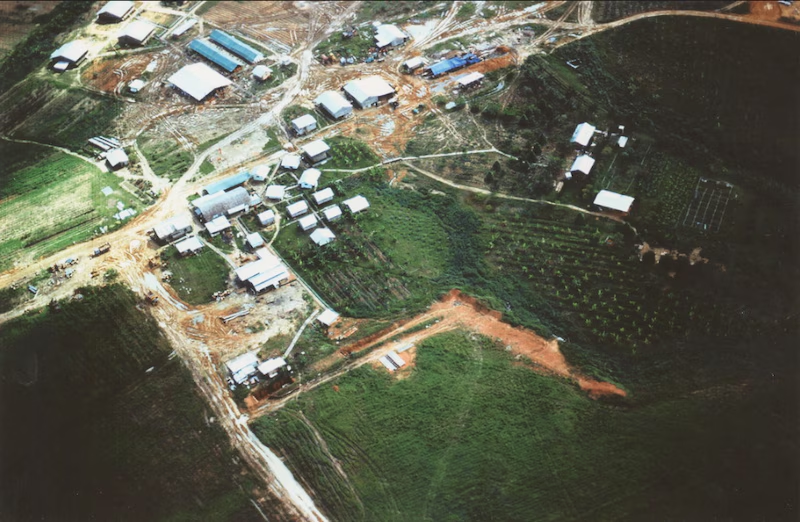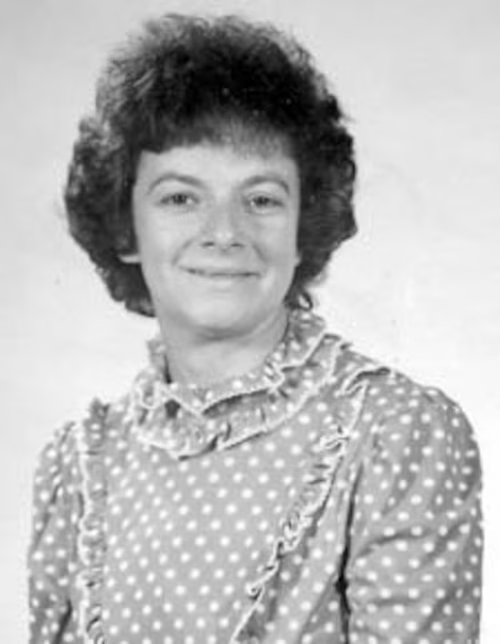(Editor’s note: This article is republished courtesy of MLive.com. The original article appears here.)
(MLive.com editor’s note: This is the fourth installment of a five-part series on the life of Bay City native Shirlee A. Fields (nee Miller), who was among 918 people who died in a mass murder-suicide in Jonestown and other Guyana locations on Nov. 18, 1978.)

BAY CITY, MI — If Jonestown was teetering on collapse, the final push came with the arrival of U.S. Rep. Leo J. Ryan on Nov. 17, 1978, just 10 days after Bay City native Shirlee A. Fields’ husband Donald claimed he was “well and happy.”
Joining the Rev. Jim Jones’ Peoples Temple movement around 1976, Shirlee, Donald and their two children arrived in Jonestown, Guyana, the following July. Meanwhile, concerned relatives of Jonestown inhabitants were beseeching officials for an investigation, alleging their loved ones were subject to abuse and being held in the isolated compound against their will.
Fearing intrusion, Jones kept his town at a heightened state, at times enacting mass suicide drills dubbed White Nights.
“It was a long, slow slide as the community deteriorated and collapsed within itself,” said Fielding M. “Mac” McGehee III, a researcher and a leading authority on Jonestown. “The language of death was everywhere. For them (death) was not a big step. It was a slow, incremental thing.”
On, Nov. 18, 1978, Jim Jones led his followers in a mass murder-suicide that resulted in the death of more than 900 people.
Ryan led an investigative delegation to Jonestown in response to numerous complaints of human rights violations. His party consisted of newspaper and TV reporters and several relatives of Peoples Temple members.
Shirlee and Donald Fields were on a list of 162 residents authorized to speak to the guests as a “community task force,” according to a document recovered from the town. They were to put on a strong, positive public face and keep “negative, erratic” residents away from visitors. Families were encouraged to spend more time together than they normally might “to be visible as nuclear family groups,” the document states.
Amid applause from the congregation, the delegation was treated to musical performances by house band Jonestown Express and served dinner in the town’s pavilion. After mingling with residents, Ryan took to the stage with microphone in hand, as seen in video footage recorded reporters and featured in the 2018 documentary “Jonestown: Terror in the Jungle.”
“Questions have been raised about your operation here,” Ryan told the crowd. “Whatever the comments are, there are some people here who believe this is the best thing that ever happened to them in their whole life.”
Those gathered rose and erupted in more applause and cheers.
Jones’ son, Stephan G. Jones, told MLive he was not in Jonestown that day as he and some of his brothers were with the town’s basketball team in Georgetown for a scrimmage with the Guyanese national team. He contends most residents were motivated by fear to do what his father and other leaders demanded or expected of them.
While in Georgetown, Stephan Jones received a radio transmission from his father ordering him and his teammates to return to Jonestown. He refused, much to his father’s anger.

“Sadly, we refused to return to Jonestown because we selfishly were enjoying some freedom from dad’s madness, our growing camaraderie against him, and playing basketball,” he recalled. “And we somewhat deludedly believed him to be too much of a coward to go through with his many-times threatened mass suicide.”
Though NBC recorded hours of video footage of the visit, if their cameras captured the Fieldses, they did not stand out.
The façade crumbled when a Temple member slipped a note to the visitors requesting help in leaving. The next morning, more people said they wanted to leave. Jones grew surly and a loyalist attacked Ryan with a knife, survivors recounted. Cameramen captured the upheaval as the mood soured.
The Ryan delegation, joined by 15 defectors and one loyalist posing as a defector, hurriedly left Jonestown for an airstrip in Port Kaituma. Not long after, several of Jones’ guards drove up and opened fire on the group, video footage recorded by an NBC cameraman shows.
Ryan, three journalists, and one defector died from their wounds. Nine others were wounded but survived.
Jones had called a meeting in Jonestown’s pavilion as this scenario unfolded. In a 44-minute recording, he informs the crowd Ryan will be killed and tells them American and Guyanese military forces will come down on them, take their children, and torture them.
“Jones tended to react rather than act,” McGehee said. “His move to Guyana was in reaction to bad publicity. His decision on which date to die was in reaction to Leo Ryan.”
The “Death Tape” of the mass death is among the most unsettling recordings in existence. It was recorded in part over a slowed, warbled version of the Delfonics’ song “I’m Sorry,” adding to its surreal quality.
On the tape, Jones decries traitors and liars and urges his followers to commit “revolutionary suicide.” While many shout in agreement, one woman, identified by researchers as Christine Miller, opposes this and presses Jones for alternatives, which he disregards. He tells his followers without him, their lives have no meaning.
Once word reaches him that Ryan has been killed, Jones instructs his followers to drink “medicine” — a concoction of Flavor Aid, cyanide, and tranquilizers. He falsely assures them it will be like going to sleep and that the children should take it first. In fact, death by cyanide poisoning is a lengthy, painful ordeal.
Several women individually address Jones, many expressing their gratitude. Most remain unidentified and none sound like Shirlee.
As the tape progresses, children can he heard weeping and screaming. Jones chastises parents for not keeping their kids calm as they “step over to the next plane” and harangues others for not laying down their lives willingly. He even harangues his own wife for resisting; she too would die there.
Voices gradually grow quieter until all fades to silence.
“We didn’t commit suicide,” Jones says, as the tape hisses to a close. “We committed an act of revolutionary suicide protesting the conditions of an inhumane world.”
McGehee said it’s likely Temple leaders conferred with Don Fields and leaned on his pharmacist’s knowledge to determine the poison’s dosages. Without a doubt, he knew of the cyanide’s presence in Jonestown.
“If (the town doctor) would have had that conversation with anybody, it would have been Don Fields,” McGehee said.
(Cole Waterman is a Michigan-based crime reporter with a long-held interest in Peoples Temple and Jonestown who has submitted numerous primary source transcripts from the FBI’s FOIA files to the site beginning in the fall of 2023. He can be reached at Cole_Waterman@mlive.com.)